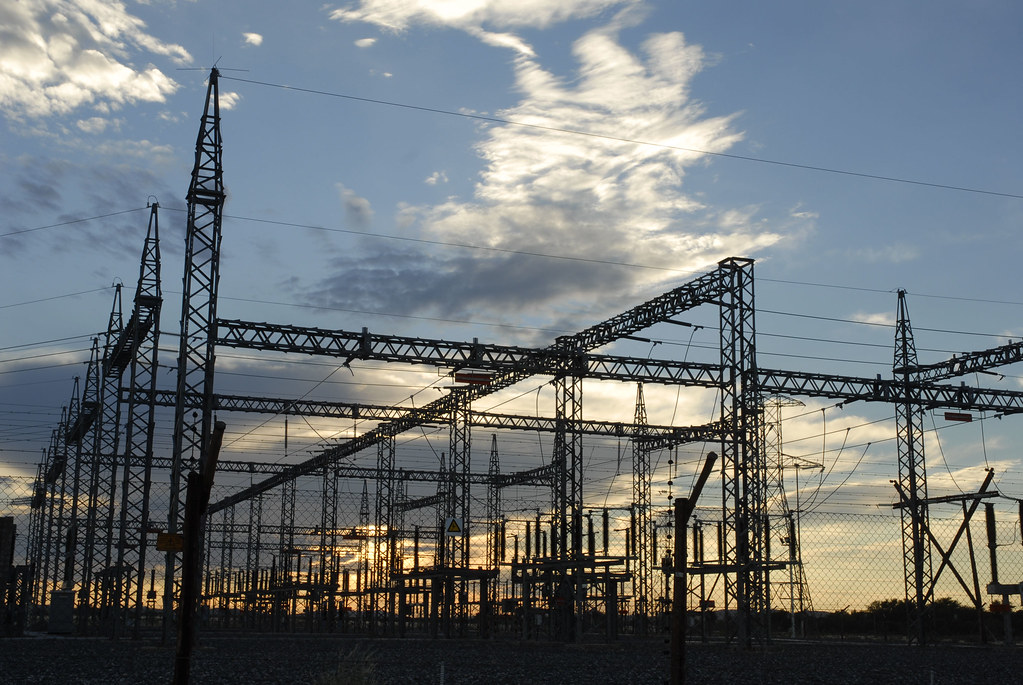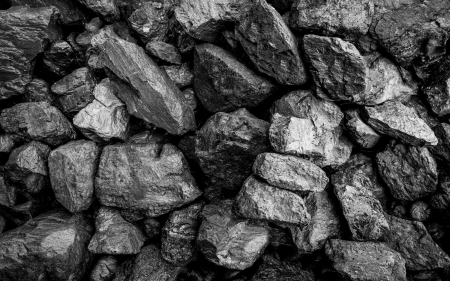Gwede Mantashe is going to be pissed. Someone at Eskom has found out about batteries. Big ones. It gets worse for the non-practising energy minister: they have bought a few – about 500 megawatts in total.
Even worse, Eskom has given it an acronym. Bess – for battery energy storage system. That means it’s serious. An acronym means that it’s talked about enough to need one. The Bess project is a potential game changer for South Africa’s energy supply, as any who look to the future, instead of the past, for a way out of rolling blackouts.
“This is the first part of the 500MW Bess initiative announced by President Cyril Ramaphosa as part of government’s measures to address South Africa’s long-running energy crisis,” Eskom said proudly last month.
“The Eskom Bess project will act as a proof of concept on the delivery of the first battery energy storage project in South Africa. The project supports transformational aspects by demonstrating large-scale deployment in support of South Africa’s renewable energy strategy and addresses local overall system challenges.”
Unlike the last century’s solution of pumping water uphill when there is spare power – and then letting it run back down to generate extra power when it’s needed – now, any extra juice will be stored in batteries. Then it can be used when needed, and not wasted on an outdated, energy-inefficient hydroelectric hack.
Mantashe is going to be furious. There is he trying to convince the country that the way out of, well, darkness is through unnecessarily expensive gas-powerships and trying to embrace big fat contracts with potentially lucrative kick-backs for an upcoming election.
As I have long argued, batteries are the missing ingredient in South Africa’s future energy mix. The only person who seems oblivious to it is the most important person responsible for energy, even if he can’t read his own title. Then again, this Bosasa corruption-sullied minister, and ANC chair, is only in cabinet to prevent KwaZulu-Natal ANC cadres embarrassing his boss by singing in praise of #PresidunceJacobZuma at the ruling party’s conferences. Anyone who can point to any other reason, please let me know.
Batteries power everything in our technologically-enabled world, from smartphones to electric vehicles. Elon Musk’s Powerwalls are designed for houses, while his much larger enterprise-scale power banks are being used for cities and countries.
Over on Planet Ebrahim Patel – where the trade, industry and competition minister lives, seemingly in the same alternative universe as Planet Gwede Mantashe – there has thankfully been a flash of, well, reality. Instead of requiring 100% of the solar panels and to be manufactured in South Africa, it is now down to 35%.
There’s only one little problem. There isn’t a solar panel manufacturing industry in the country.
There are only two “assembly plants, they are not even only manufacturing plants, because they are importing the wafers from China and assembling them in the country,” Professor Samson Mpaueli, a director for the Centre for Renewable Energy Studies at Stellenbosch University, told 702 after Patel’s announcement on Monday 1 August.
Despite this patent’s lack of actual capacity, Patel wants the country to wait for such an industry to be built – a years-long process that requires both investment and electricity, neither of which is in abundant supply. It also betrays how out of touch Patel is with the lived reality of South Africa’s citizens. He wants to hold the renewables revolution hostage for the many years it will take to build such an industry, while also expecting those citizens to bear the brunt of the unnecessary surcharge for importing and assembling something that could be bought cheaper and ready to go directly from the manufacturer. What are the ANC’s priorities? Using the available technology to its best effect to solve the #loadshitting, or trying to create another patronage network?
As Professor Mpaueli pointed out, without a proper timeframe for Patel’s grandiose plans, we risk “a dumping of technologies”. Done properly, however, there is the potential “to see a lot more growth in renewable technology uptake”.
Might a make a humble suggestion to the two misguided ministers, instead of focusing on manufacturing, can they not use the marvellous intellectual and scientific “local content” to inform their decisions, please? Logical content is always going to trump trade barriers and save us from the rolling blackouts.
*This column first appeared in the Daily Maverick





23 Comments
Toby the so called inefficient pumped storage schemes have been our saviours and are by enlarge a fairly efficient way of storing energy more so when you consider they were built when batteries were only the ones in your wrist watch or in your torch. Scale of economy dictates the solutions and with respect as an engineer I can quite confidently tell you that some of our deep mines could still be converted, economically, to pumped storage schemes (in Switzerland they hoist and drop concrete blocks so how’s that for efficiency). But be that as it may, as regards the local PV panel manufacturers there are at least two that I know of that started and went out of business because of no protection from government in the face of cheap Chinese imports. Whilst I agree that establishing a complete manufacturing facility from raw materials to finished product might take a year or so a plant that laminates can be commissioned in probably not much more than 6 months. Unfortunately the minister is trying to close the door after the horse has bolted as had Davies done, four years ago, what Patel is attempting to do now SA would have its own locally manufactured PV panels and probably inverters too. We have lots of land so being flooded with less efficient PVs and turbines is the last of our problems as we can quite happily cope with systems with lower energy generating densities, we just need the systems so anything will do at this point in time. What won’t do is more fossil fuel guzzling and CO2 spewing plant.
Interesting read, and comments, though I have to question those that raise the issue of Co2 emissions.
Photoysynthesis: plants breathe in Co2 and release oxygen, it’s a win-win situation for us and the plants. There is no foundation to the claim that humans have significantly impacted on Co2 levels, they still remain much as they ever were, at around 3 or 4% of the total atmosphere surrounding us, and have basically zero impact on the “climate change” hoax.
Pumping water up for turbine use in times of additional power requirements has worked for many years, and has proven effective, but perhaps more attention needs to be placed to repairing the broken-down dam infrastructures that have been allowed to degenerate into a state of decay, thus creating a problem there never once was.
Instead of buying their way to a temporary solution, or paying someone else to take over our problems, more attention should be given to repairing a once-solid, working infrastructure that has fallen into a state of neglect through ignorance, willful abandonment, and more.
Thanx for maintaining perspective…
What kind of reporting is this , hate Gwede all you want but he is right , Zuma was also correct about Nuclear and today we would have been +9years ahead of building a nuclear power plant , way ahead of Egypt that is only starting this year … go learn how to write idiot
Lol. BESS is a quick (and dirty) but expensive win to get out of a crisis. You’ll have to do a bit more reading on ” outdated, energy-inefficient hydroelectric hack”. I’m sure switzerland will disagree with you on outdated with their recently completed €2 billion water battery becoming a cornerstone to european renewable energy AND sustainable energy generation.
I don’t like said ministers, but please get the facts right. Pumped storage is super efficient and scalable. With our high escarpment there are numerous PS sites available. Batteries are fine for emergency backup at small town scale, but not at grid scale.
#GwedeMantasheMustGo
I read through the various comments only to realize that many commentators speak as if they know a lot but it would be appreciated if a commentator could give references to facts so that one can understand truth from fiction.
Interesting but …..
Sigh, another fool that thinks that renewable energy can be stored in batteries. It’s even sadder there he scorns pumped storage which is the only feasible way to store energy. Hopefully he will eventually emigrate to New Zealand and join stuff.do.nz and we will be spared this sad one-man “journalism”.
Agree 100%
To use the word “pissed” in an article is surely not professional and in bad taste.
To be fair, politically correct language is used regularly to screw over the populace! We are in a transformative period and I recognize that such abrasive speech could be a bit hard on the ears, but one could argue that it is relatable.
It is good to recognise that BESS has been a long-standing acronym for Battery Energy Storage Solutions in the international energy arena. The problem with Eskom’s purchase of the specific batteries, is that they are lithium batteries and they do not make public what lithium technology/chemistry these Chinese batteries are using. And either way, lithium-based batteries are not ideal for the purpose, as they may not even last 10 years – and then at a continuously diminishing performance from day 1 – due to potential more cycles per day. In addition, these batteries have a risk of disastrous fire and explosion, while O&M requires careful attention to safety aspects.
For utility scale batteries, flow batteries provide a 25+ years of life without performance degradation, no risk of fire and explosion and a lower Total Cost of Ownership than lithium batteries in the long run. They can also provide more functionality because of there available larger energy capacity and longer duration.
The problem with the Eskom tenders, is that they have been written for lithium batteries specifically, and not addressing the user requirement, which would lead to a wider variety of solutions that addresses the need, being offered.
From my own analytical work on these, I can state that, especially in conjunction with a wind farm and the wide range of variances in the demand profile, lithium-based batteries is the most expensive and risky technology for the Eskom and national applications.
Oh, and flow batteries are the easiest to assemble and even manufacture in large quantities locally.
500MW of battery.A small bit of perspective here.That is like running Koeberg for 30mins.
SA’s generation is around 44000MW when nothing is broken,currently it averages in the 20000-30000MW range as something is always broken.
500MW of backup battery will support our grid for mere minutes,seconds even if we had a total loss of generation. Dam pump stations,wave stations,wind generation,and solar (when the sun is shining) are way better ways of spending Eskom cash flow than batteries.
Ag wat n hoop kak kom by asb
Toby still has not discovered that there are other products than apple. So, go figure….
Lithium batteries are not a good option for grid scale battery storage. They degrade over time,
pose a fire risk, etc. Check out Vanadium Redox Flow Batteries. These use a Vanadium electrolyte which doesn’t degrade over time, or can be fully recycled, there isn’t any fire risk, and vanadium is abundant in SA so users local content. Not only that but the largest electrolyte factory outside of China is currently being built in SA by Bushveld Minerals.
SIES MAN!!
In 2008 our retro thinking leaders more or less forced Prof Vivian Alberts to leave SA for Germany. He was professor in research and development of solar technology at U J . With 13 years of experience he cracked one of the most important innovations in producing thin film flexible solar voltaic collectors. Of course no one saw fit to continue to finance his invention so he left for Germany where he set up a manufacturing factory Johanna Solar Technology who now manufacture these collectors which are much cheaper than silicon Crystal panels. No doubt we shall be importing these panels at a premium. Well done for minister Patel for cottoning on to the importance of manufacturing in SA albeit 14 years too late.
Agreed!
US Vanadium also manufactures vanadium electrolyte – the best quality, according to them – and have upgraded their production capacity significantly. I have been following the Bushveld electrolyte factory development with interest, but progress is not clear at this point in time…
But we need to sell the concept of long-duration flow batteries for large mini and utility scale applications more actively before everybody get on the lithium bandwagon just to see them fail in 10-12 year’s time, while having to be augmented all the way. My calculations show that the Total Cost of Ownership of a lithium battery (even LiFePO4) over the 20 or 25-year period of a solar farm amounts to approximately 2.5x the initial capex…
Van-Dongen-and-Bekker-2020-Potential-for-New-Pumped-Storage-Schemes-in-South-Africa-Energycon.pdf
Tony, dream on about battery power, its a fake solution for large power producers!!! Please wake up to reality !!!!!!